15 Best & Effective Teaching Strategies for Online Tutors
15 Best & Effective Teaching Strategies for Online Tutors

With the rise of blended learning and virtual education, it’s official—the classroom has no walls. And that’s both a blessing and a challenge. For online tutors, the digital world offers endless possibilities to reach students across the globe. But it also requires a shift from the classic “chalk-and-talk” method to a more dynamic, personalized, and tech-savvy approach.
So, how do you stand out in a sea of online educators? You evolve to increase student engagement .
From boosting engagement and motivation to supporting every learning style under the virtual sun, this blog dives into 15 effective teaching methods and strategies you can use today to make your virtual classes smarter, sharper, and more student-centered.
Effective Teaching Methods to Improve Learning
Let’s get one thing straight: Online learning isn’t just in-person learning... on Zoom. You’re not just digitizing the same old traditional methods—you’re transforming it to fit a new, interactive medium.
Without the right strategy, digital learning can feel like talking into the void. But when done well? It’s magical.

Here’s why effective teaching methods and professional development re crucial in an online setup:
They increase learner engagement in the absence of face-to-face interaction.
They support different learning preferences—visual, auditory, kinesthetic, and everything in between.
They create structure, making sure no student is left behind.
And most importantly, they turn passive listeners into active participants.
Let’s explore the 15 most effective online teaching strategies, including inquiry based learning, that make virtual classrooms come alive.
With the rise of virtual education, teachers and tutors are rethinking how they teach students in modern classrooms. The shift from a physical classroom to an online environment means educators must embrace flexible, impactful, and innovative online teaching strategies to enhance the learning process. It’s not just about uploading content or running video conferencing sessions—online teaching demands a deeper understanding of teaching methods that work in virtual settings.
To keep students engaged, it’s crucial to align your differentiated instruction and instructional methods with diverse learning styles. Whether you’re working with visual learners, hands-on participants, or those who thrive through discussion, the goal is to engage students in meaningful learning activities that enhance student success and reduce student anxiety.
Incorporating effective teaching tools and instructional strategies can dramatically improve student engagement, especially when teaching and learning takes place in digital spaces. When you implement dynamic, learner-centric online instruction, you create a learning environment that supports student learning, lifelong learning, academic progress, and confidence in learners.
This blog highlights 15 transformative teaching strategies tailored for online learning environments. These aren’t just theory—they’re practical, proven ways to help students work, achieve deeper understanding, and students reflect. Ready to unlock the secrets to more impactful virtual classes?
Gamification
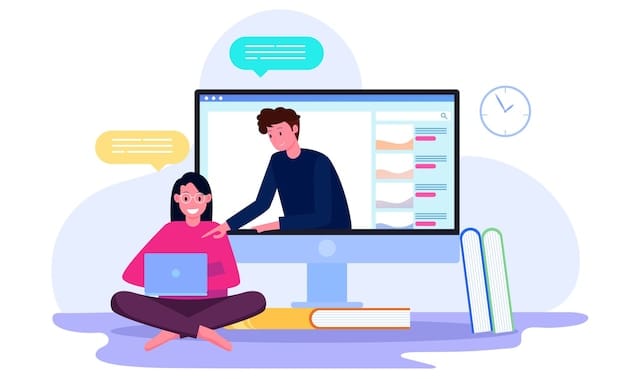
Gamification is one of the most exciting online teaching strategies to emerge in recent years. By integrating game-like elements into online learning, such as points, rewards, leaderboards, and levels, educators can motivate students in ways traditional approaches cannot. It’s a fun, effective way to engage students, improve the learning process, and transform even the dullest topic into something energizing.
Through gamified online courses, students feel a stronger sense of accomplishment, especially when learning activities come with built-in incentives. Teachers can encourage students to reach learning milestones and offer digital badges to promote lifelong learning. Platforms like Kahoot!, Quizizz, or Classcraft bring games and cooperative learning into the virtual classroom, keeping students engaged while tracking their progress in real-time.
Gamification also supports differentiated instruction by allowing students to progress at their own pace, making it an ideal strategy for diverse learning styles. It’s especially helpful for visual learners, since many game tools are graphic-heavy and interactive. When you equip students with this approach, they build problem solving skills, grow confident in self-directed tasks, and often collaborate through group work, while also ensuring that all students answer .

As an instructional strategy, gamification doesn’t just entertain—it enhances student learning by making lessons feel like real world tasks. It fosters active learning strategies and provides an easy way to gather feedback through quick quizzes and challenges. Plus, it enables teachers to provide students with instant performance data, encouraging reflection and better decision-making.
When you add gamification to your online instruction, you also teach students how to stay motivated, manage time, and meet learning goals in a playful yet impactful way. In short, this isn’t just playing around—it’s serious learning, cleverly disguised as fun.
Cooperative Learning

In online learning environments, students may feel isolated, especially when compared to the vibrant social dynamics of a physical classroom. That’s where cooperative learning comes into play. This instructional strategy focuses on collaboration, communication, and teamwork—even in a virtual setting. It’s one of the most powerful online teaching strategies to motivate students, strengthen relationships, and enhance the overall learning process.
Through group work, peer teaching, and shared responsibilities, students develop crucial problem solving skills. Teachers can assign roles in breakout rooms, organize small group discussions, and design project based learning tasks that help equip students for real-life collaboration. These teaching strategies encourage students work together to solve challenges, brainstorm ideas, and reflect on results—just as they would in the workplace.
One major benefit of cooperative learning is that it supports diverse learning styles. Whether students learn best through discussion, visuals, or hands-on interaction, they find value in teamwork. It also reduces student anxiety by shifting the pressure from the individual to the group. This helps engage students who might otherwise be hesitant to speak up.
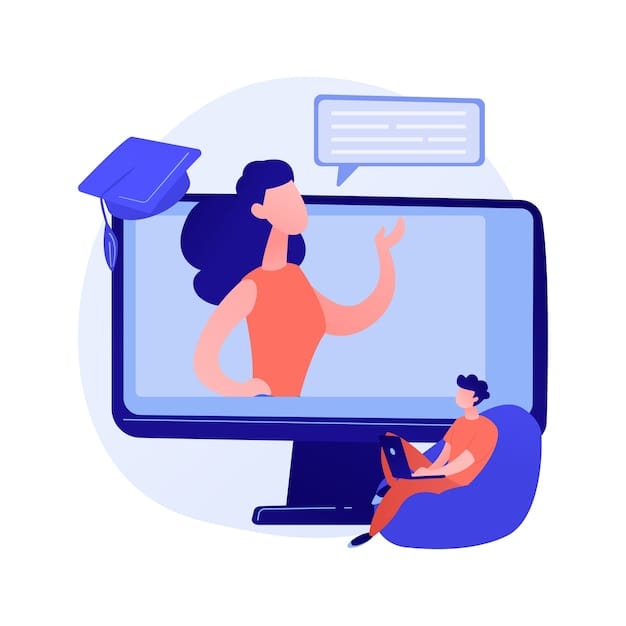
When you encourage students to explain ideas to their peers, they naturally develop research skills, enhance their understanding, and solidify their learning. This is why teaching and learning in cooperative formats leads to better academic outcomes. It also helps many teachersimprove student engagement by introducing variety into daily lessons.

Moreover, cooperative learning promotes lifelong learning by teaching students how to listen, collaborate, and compromise. It prepares them for diverse professional settings while building empathy and communication skills. With the help of digital online resources like Google Docs, Jamboard, or Padlet, students can easily share thoughts and work on real-time tasks—no matter where they are.
Differentiated Instruction

In the evolving world of online learning, the idea that one method works for every student no longer holds true. That’s why differentiated instruction is one of the most vital online teaching strategies for modern educators. It focuses on tailoring the learning goals and learning process to match students’ abilities, interests, and diverse learning styles, ensuring that all your students receive the attention and support they need to thrive.
This instructional strategy works beautifully in online learning environments, where digital tools make it easier to customize learning activities. Whether through adaptive quizzes, flexible deadlines, or tiered assignments, you can adjust tasks so students work at their own pace. This not only reduces student anxiety but also leads to stronger learning outcomes and improved student success.

By integrating differentiated instruction into your teaching practices, you also support lifelong learning habits. Students are more likely to stay engaged when they feel lessons are made just for them. You can use online resources like learning management systems, video conferencing tools, and e-portfolios to streamline personalized instruction.
Visualization
In online learning environments, it’s easy for students to feel disconnected from the material, especially when concepts become too abstract or theoretical. That’s where visualization comes in—a powerful instructional strategy that turns complex ideas into clear, understandable images. As one of the most effective online teaching strategies, visualization helps engage students, especially visual learners, and enhances the overall learning process by making it tangible and memorable.
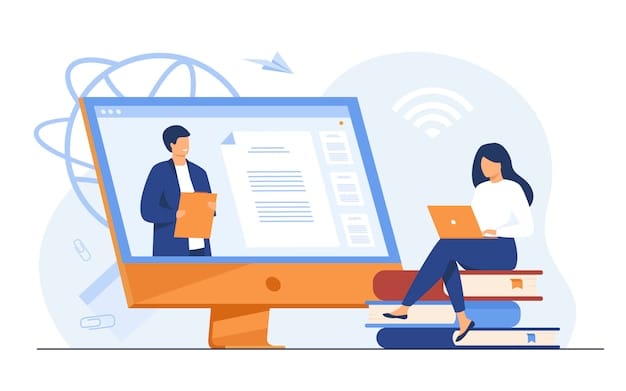
By using charts, graphs, infographics, diagrams, and mind maps, you provide students with visual anchors that support memory retention and comprehension. These tools help teach students how to organize ideas, understand patterns, and connect key concepts—important skills for both academic outcomes and lifelong learning. Whether you're explaining the structure of a cell or outlining steps in a math problem, visualization ensures students understand the "what" and the "why."
Many teaching methods become more effective when paired with visuals. For example, during online courses, teachers can present content with screen-sharing or embedded visuals to simplify explanations. Tools like Canva, Miro, and Lucidchart can be used to create interactive images that help students reflect, work collaboratively, and deepen their understanding through active learning.
Student-Centered Inquiry
Inquiry-based learning works exceptionally well in online learning environments where access to online resources is limitless. Students can independently conduct research, participate in online discussion forums, or collaborate in small group discussions to explore a topic from multiple perspectives. This approach builds essential research skills, sharpens critical thinking, and helps equip students for both academic success and lifelong learning.
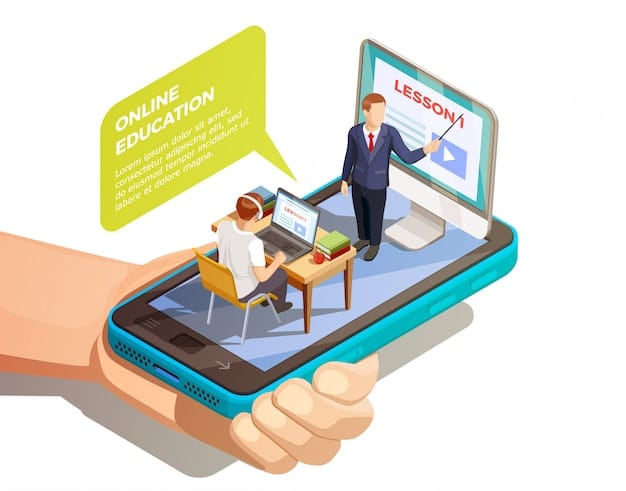
By giving students the freedom to ask questions, you not only motivate students, but also foster student engagement and ownership. This deepens their connection to the content and builds habits of reflection. Inquiry-based learning activities help students understand concepts through active exploration, and can be especially effective when paired with project based learning or interdisciplinary assignments.
This approach also supports diverse learning styles. For instance, visual learners might create a presentation to share their findings, while others might prefer writing, speaking, or building a prototype. It creates space for all your students to contribute, based on their strengths. You can even structure your online instruction to offer guiding questions, resource links, and checkpoints to steer learners in the right direction while allowing for autonomy.
Student-centered inquiry is a great way to improve student engagement, as it naturally leads to active learning. When students reflect on their discoveries and draw conclusions, they achieve a deeper understanding of the subject matter. Plus, when they present findings to peers, you create opportunities for peer teaching, group work, and collaboration.

Scaffolding
In both traditional and online learning environments, some students struggle when faced with complex concepts or overwhelming tasks. That’s where scaffolding comes in—one of the most effective online teaching strategies to encourage students, support their development, and build toward mastery. Scaffolding breaks lessons into manageable pieces, offering structured instructional methods that evolve in complexity as learners gain confidence and skills.
This strategy is especially effective for diverse learning styles, as it allows educators to teach students at their own pace. By offering guidance through guided notes, checklists, or interactive online resources, teachers help learners gradually build problem-solving skills. These incremental steps ensure that students reflect on what they’re learning and feel less anxious about difficult topics—making it a great way to reduce student anxiety and increase student success.

In online instruction, scaffolding might look like releasing materials in phases, using pre-recorded walkthroughs, or offering hints and prompts during online courses. You can also implement formative assessment techniques such as short quizzes or exit tickets to check understanding before moving forward. These steps motivate students by helping them track their progress and celebrate small wins along the way.
Scaffolding also fits perfectly with active learning strategies and project based learning. As students work through more complex learning activities, they build independence while still receiving timely support. You can integrate checkpoints into your virtual classroom, offer feedback during small group discussions, or use templates that help guide students through each stage of a task.
Flipped Classroom
The flipped classroom is one of the most transformative online teaching strategies, reversing the traditional flow of instruction. Instead of using class time to deliver lectures, students study the content beforehand—via videos, readings, or online resources—and then use synchronous sessions for active learning, collaboration, and feedback. This instructional strategy not only saves time but also boosts student engagement by making class more interactive and discussion-focused.
In the online learning world, the flipped model is incredibly practical. With tools like video conferencing, digital whiteboards, and learning management systems, you can teach students key concepts asynchronously and then use live sessions to encourage students to ask questions, apply knowledge, and solve problems. This model supports diverse learning styles, as visual learners can benefit from recorded visuals, while auditory learners can listen at their own pace.
Flipped classrooms also promote lifelong learning by helping students become more responsible for their education. When students prepare before class, they arrive ready to participate, think critically, and contribute to small group discussions or online discussion forums. This model allows you to equip students with the skills needed for independence and continuous growth.
It’s also a great opportunity to implement formative assessment through quick polls, reflection prompts, or peer reviews during class. This way, you can gather feedback, track progress, and adapt instruction in real time. The flipped model also works well alongside project based learning, where pre-class research feeds into collaborative, real world tasks completed in class.
The flipped classroom is a win-win for both teachers and students. It increases student success by turning passive listening into active learning. And it gives you, as the instructor, more time to focus on coaching, mentoring, and answering students' questions—not just delivering content.
Project-Based Learning (PBL)
Project-Based Learning (PBL) is one of the most dynamic online teaching strategies that transforms how you teach students by making learning real, relevant, and results-driven. Instead of memorizing facts with traditional methods , students solve real world tasks over time through research, creativity, and collaboration. In the context of online learning, this strategy drives student engagement, strengthens problem solving skills, and promotes lifelong learning in the most meaningful way.
PBL fits beautifully in online learning environments because it leverages online resources, cloud-based collaboration tools, and multimedia presentations to keep students engaged. Whether you use Google Workspace, Canva, or Trello, students can easily manage timelines, communicate with teammates, and showcase their final products—all without needing a physical classroom.
Incorporating PBL into your online teaching fosters deeper student learning. As students work on long-term projects, they develop research skills, practice critical thinking, and engage in small group discussions—all of which lead to stronger learning outcomes and better academic outcomes. You can also integrate formative assessment checkpoints to gather feedback and guide students throughout the learning process.
This approach also helps to motivate students who might otherwise disengage in lecture-heavy lessons. By solving real problems, they begin to understand the purpose of what they’re learning. Teachers can encourage students to select topics aligned with their interests, further increasing ownership and investment in the outcome.
Project based learning is also a fantastic way to promote peer teaching, as students share insights, collaborate across disciplines, and reflect together. In many ways, it’s the ultimate instructional strategy—combining teaching and learning, content mastery, skill-building, and personal growth.
Mindfulness and Social-Emotional Learning (SEL)
While many teachers focus on academic achievement through online teaching strategies, equally important are students’ emotional well-being and self-awareness. Mindfulness and Social-Emotional Learning (SEL) are powerful teaching strategies and essential professional development that help equip students with emotional intelligence, stress management techniques, and interpersonal skills. In the context of online learning environments, these practices reduce student anxiety, boost student engagement, and create a more compassionate learning environment.
Mindfulness encourages students to slow down, reflect, and be present—something especially vital when the learning process happens on screens and in isolation. Simple breathing exercises, journaling, or “mindful minutes” can become regular learning activities in the virtual classroom, helping students reflect and self-regulate. These moments of calm are key to improving attention spans, which in turn can motivate students and improve focus during online courses.
Meanwhile, SEL includes teaching empathy, goal setting, conflict resolution, and emotional literacy. These instructional methods help students understand themselves and others, building stronger connections even in digital spaces. You can implement SEL through small group discussions, collaborative check-ins, and online discussion prompts that ask students to explore feelings, challenges, and personal growth.
Many educators find that weaving SEL into online instruction leads to stronger classroom culture and better collaboration. Plus, it enhances teaching and learning by fostering trust and open communication. In a world where students face growing pressures, teaching them how to manage stress and care for their well-being is a gift that extends far beyond the lesson.
Peer Teaching and Peer Assessment
When students explain topics to others, they reinforce their own understanding. Whether in breakout rooms, small group discussions, or shared slideshows, peer instruction encourages students reflect, express their ideas clearly, and listen actively. It also supports active learning strategies by turning students into active participants in the learning process.
Peer assessment works similarly. When students review each other’s work, they develop critical thinking and research skills while learning to offer and receive constructive feedback. These activities build empathy, boost confidence, and improve student engagement, as students begin to care about the work of their peers as much as their own.
This instructional strategy supports diverse learning styles by giving students the option to explain through text, video, audio, or visuals—whichever suits them best. It also helps reduce student anxiety, as students often feel more comfortable receiving input from classmates before approaching the teacher.
You can incorporate peer teaching in your online courses through group presentations, collaborative projects, and even role-reversal exercises where students “become the teacher” for a specific topic. Platforms like Google Docs, Padlet, and Flip make it easy for students to contribute, comment, and collaborate asynchronously or in real-time.
Ultimately, peer teaching and assessment promote a culture of shared responsibility. When you encourage students to teach, evaluate, and inspire each other, you’re not just improving understanding—you’re helping to promote lifelong learning, build social-emotional growth, and create a classroom where students work together to succeed.
Socratic Questioning
One of the most intellectually stimulating online teaching strategies is Socratic questioning—a method that encourages dialogue over monologue. Instead of giving students time to answer directly, educators ask probing, open-ended questions that challenge assumptions and push students to think deeply. This instructional strategy is ideal for building critical thinking, promoting lifelong learning, and driving meaningful student engagement in online learning environments.
By using thought-provoking questions during online instruction, you invite students to analyze, compare, and reflect. Questions like “Why do you think that?” or “What evidence supports your answer?” inspire students reflect, explore multiple viewpoints, and form stronger arguments. This method helps teach students how to evaluate ideas, develop reasoning, and articulate their thoughts clearly.
Socratic questioning supports diverse learning styles by allowing students to respond in ways that suit them—some may prefer speaking in live video conferencing sessions, while others might express themselves better in written online discussion forums. Either way, this style of questioning promotes inclusion, active participation, and higher-level thinking.
To maximize its effectiveness, pair Socratic questioning with small group discussion or peer teaching. As students work together to unpack questions, they naturally develop research skills and build a stronger understanding of course material. These learning activities make space for dialogue and debate, fostering a more engaged, collaborative learning environment.
This strategy also lowers student anxiety by creating a culture where questions are valued over perfect answers. It encourages students answer honestly, even when they’re unsure, and allows teachers to gather feedback on how well students are grasping concepts. Over time, this builds resilience, confidence, and curiosity—all essential to student success.
Formative Assessment
In any online learning environment, one of the most effective ways to keep students engaged and on track is through regular formative assessment. Unlike summative tests that measure learning at the end, formative assessments happen throughout the learning process, providing constant insights into how well students understand the material. This instructional strategy is essential for adjusting lessons, identifying gaps, and improving both teaching and learning outcomes.
Formative assessments can take many forms—quizzes, polls, reflections, exit tickets, or discussion prompts. In online courses, tools like Google Forms, Kahoot!, Padlet, and discussion boards make it easy to gather feedback and monitor progress. These activities help equip students with the opportunity to track their own growth and stay actively involved in the learning activities.
This strategy supports diverse learning styles by allowing students answer in multiple ways—writing, speaking, drawing, or even recording a video. It reduces student anxiety by offering low-pressure ways to show understanding and receive support before final evaluations. Plus, it promotes lifelong learning by encouraging reflection, metacognition, and accountability.
Active Learning
Passive lectures may work in a physical classroom, but in online learning environments, they often lead to disengagement and boredom. That’s why active learning is one of the most powerful online teaching strategies available today. This instructional strategy encourages students work hands-on with content through games, role-play, simulations, and other learning activities that demand thinking, doing, and reflecting.
Active learning strategies are especially effective in virtual settings where keeping students engaged can be more challenging. These approaches promote interaction, exploration, and higher-order thinking skills. From virtual labs to collaborative case studies, the goal is to teach students by involving them directly in the learning process rather than simply delivering information.
Tools like Kahoot!, Nearpod, Jamboard, and breakout rooms in video conferencing platforms allow for dynamic group work and online discussion. You can use these tools to create real world tasks that simulate decision-making, problem-solving, or collaborative challenges. These activities not only build critical thinking and problem solving skills but also foster strong student engagement.
Think-Pair-Share
Think-Pair-Share is a simple yet incredibly effective instructional strategy that encourages students to reflect, collaborate, and express their ideas. As part of your online teaching strategies toolkit, it transforms passive learning into interactive dialogue. Especially useful in online learning environments, this approach supports student engagement, critical thinking, and stronger communication skills.
Here’s how it works: First, students think independently about a question or concept. Then, they pair up—using breakout rooms or chat tools—to discuss their thoughts. Finally, they share with the whole class, either through verbal discussion or online discussion platforms. It’s an ideal method for teaching and learning, giving all your students time to process and articulate their ideas.
Think-Pair-Share is incredibly flexible. You can apply it to nearly any topic, from analyzing literature to solving math problems or discussing current events. It supports diverse learning styles, as visual learners can sketch out ideas, while others may prefer speaking or writing. This encourages participation from students who might otherwise hesitate to engage in a full-class setting.
Benefits of Using Online Teaching Strategies and Methods
Implementing intentional and well-structured online teaching strategies doesn’t just improve lessons—it transforms the entire learning environment. In the age of online learning, where distractions are many and attention spans are short, using targeted instructional methods is essential for keeping students engaged and ensuring student success. These strategies are designed to teach students more effectively by aligning with modern tools, needs, and expectations.
By combining active engagement, reflection, collaboration, and personalization, these teaching strategies foster deeper learning outcomes and support lifelong learning. Students become participants in their education, not just passive receivers of information. They develop essential problem solving skills, communication abilities, and confidence—all of which extend beyond the virtual classroom.
These strategies are especially beneficial for accommodating diverse learning styles. Some students learn best through visuals, others through hands-on practice or verbal interaction. With methods like project based learning, peer teaching, and inquiry based learning, you can provide students with varied pathways that cater to their unique strengths and preferences.
Another huge advantage? You can motivate students to take ownership of their learning journey. Tools such as formative assessment, online discussion, and flipped classroom models empower learners to explore topics at their own pace and come to class better prepared. This not only increases participation but also reduces student anxiety, creating a more positive and inclusive learning environment.
Using modern online teaching approaches also makes it easier to gather feedback, measure progress, and improve instruction on the fly. With real-time analytics and interactive tools, teachers can quickly identify what’s working—and what’s not—and pivot accordingly to guide students more effectively.
Incorporating these strategies also supports academic outcomes by making content engaging, relevant, and applicable to real world tasks. By connecting learning to students' interests and future goals, educators can enhance focus, curiosity, and perseverance—all critical for long-term success.
Conclusion

As we move further into the age of online learning, it’s no longer enough to simply shift lectures onto a screen. True transformation comes from adopting intentional, inclusive, and research-backed online teaching strategies that place students work, engagement, and growth at the center. When you teach students using dynamic, flexible instructional methods, you don’t just deliver content—you create a rich learning environment that fosters curiosity, creativity, and student success.
The 15 teaching strategies explored in this blog—from active learning strategies and project based learning to formative assessment and flipped classroom models—are designed to support diverse learning styles, reduce student anxiety, and make your online instruction more impactful. These tools help encourage students, keep students engaged, and equip students with skills that extend far beyond the classroom.
As educators, our role isn’t just to instruct—it’s to guide students, motivate students, and promote lifelong learning. Whether you're using video conferencing, gamified apps, or collaborative whiteboards, the right teaching methods can bring the magic of the physical classroom into any online environment.
So take a step back, assess your current teaching practices, and start weaving in strategies that align with your goals. With creativity, intentionality, and the right online teaching tools, you can create learning experiences that not only meet your academic outcomes but also transform how students understand, connect, and thrive.
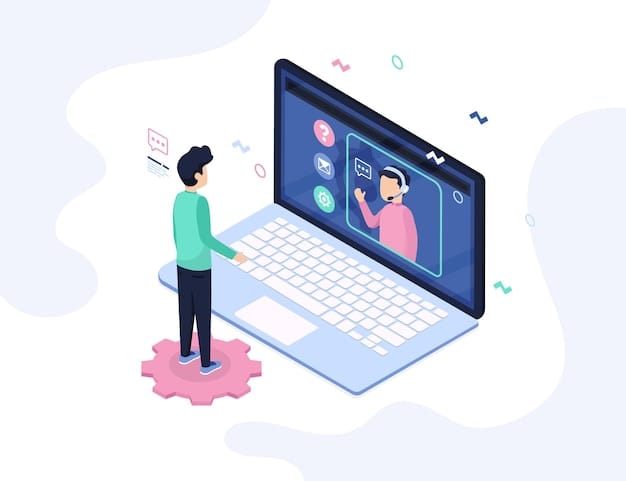
Online Teaching Strategies – FAQs
Why is it important to switch between online teaching strategies in the classroom?
Switching between online teaching strategies helps maintain student engagement, supports diverse learning styles, and prevents monotony. It ensures that all your students are actively participating, learning at their own pace, and gaining a deeper understanding of the content.
How can technology be used to enhance teaching strategies?
Technology supports teaching and learning by enabling online courses, interactive tools, multimedia content, and real world tasks. Platforms for video conferencing, polling, discussion boards, and assessment apps allow you to gather feedback, track progress, and adapt lessons to improve student engagement.
What is differentiated instruction, and how does it benefit students?
Differentiated instruction is an instructional method that customizes teaching practices to suit each student’s skill level, interests, and learning goals. It helps motivate students, supports visual learners, and allows everyone to learn at their own pace—improving both confidence and learning outcomes.
What are the 5 E's of teaching strategies?
The 5 E’s—Engage, Explore, Explain, Elaborate, Evaluate—are a proven instructional model. They create structured, student-centered lessons that foster critical thinking, encourage students reflect, and guide learners through a comprehensive learning process.
How does cooperative learning benefit student interactions?
Cooperative learning enhances collaboration, encourages group work, and builds community in both in-person and virtual classroom settings. It helps students understand through peer interaction, boosts accountability, and supports shared student success through mutual support and peer teaching.
What’s the first step in building a teaching plan using online methods?
Start by defining your learning goals and understanding your learners’ needs. Then select online teaching strategies and teaching methods that align with those goals—such as active learning, flipped classroom, or inquiry based learning—to ensure a flexible, inclusive, and outcome-focused plan.
Why are online teaching strategies essential for student achievement?
They allow teachers to provide students with personalized instruction, foster deeper student engagement, and adapt to diverse learning styles. In doing so, they promote better academic outcomes, reduce student anxiety, and prepare learners with the tools they need for lifelong learning.
Comments
Your comment has been submitted successfully!